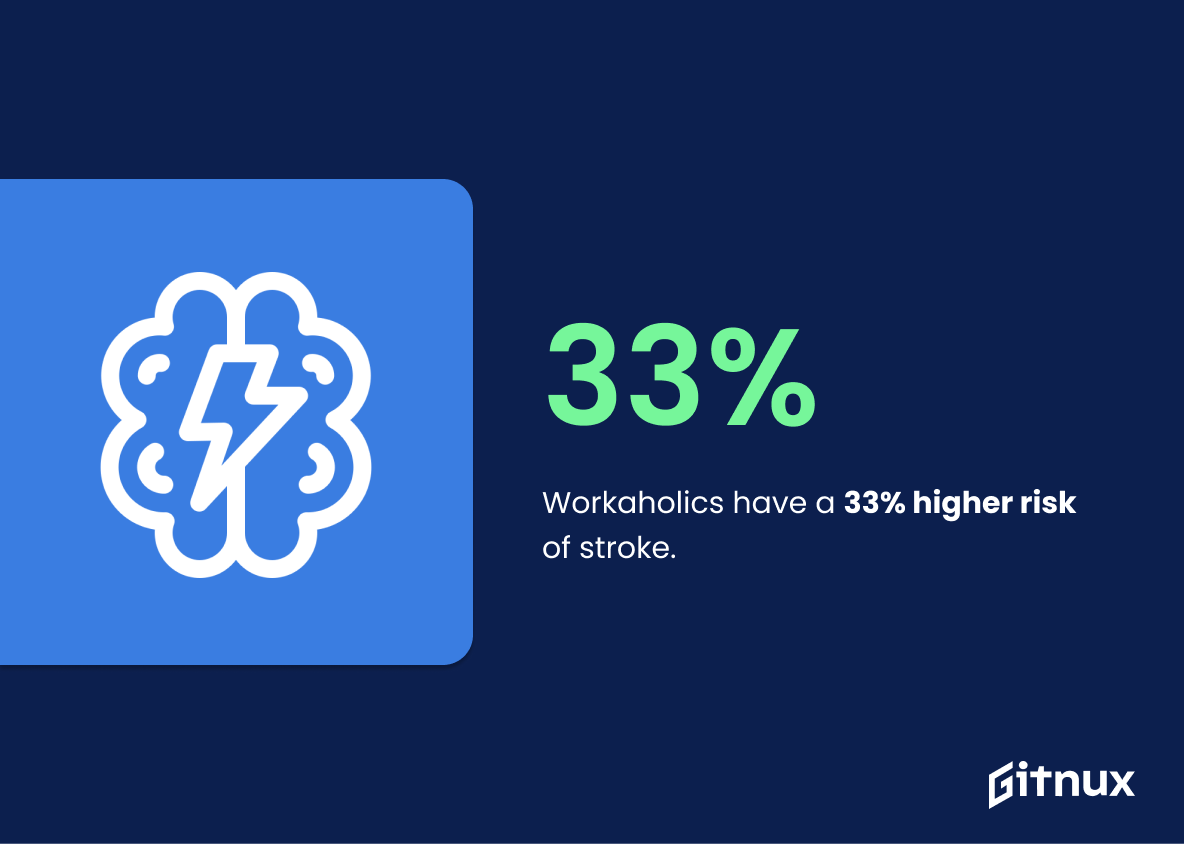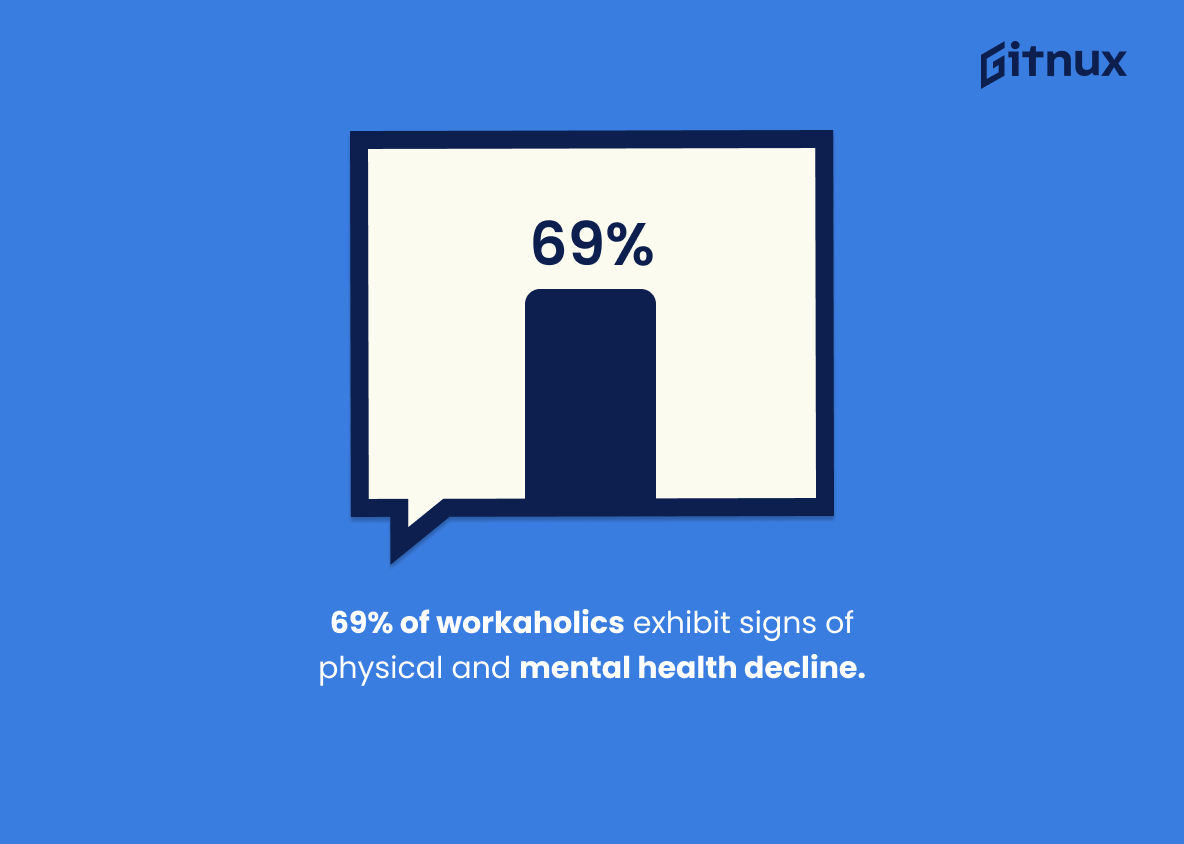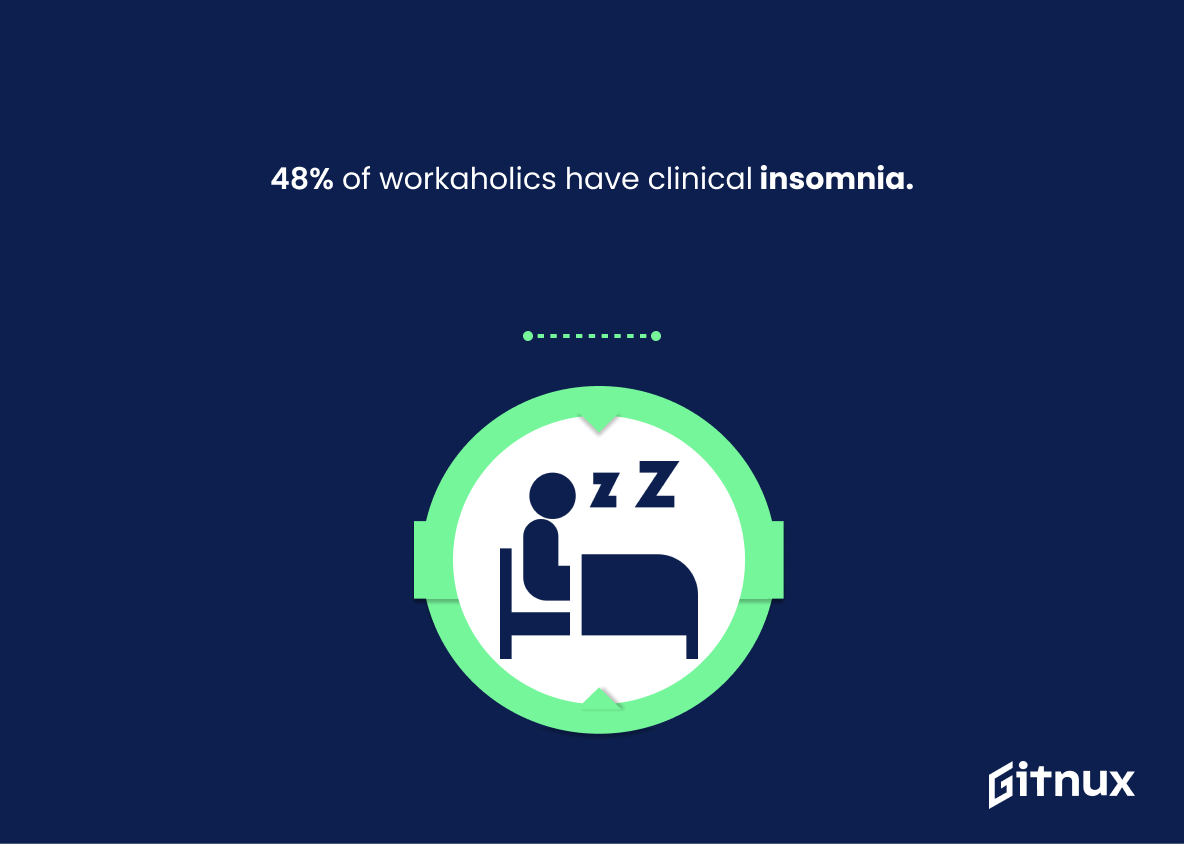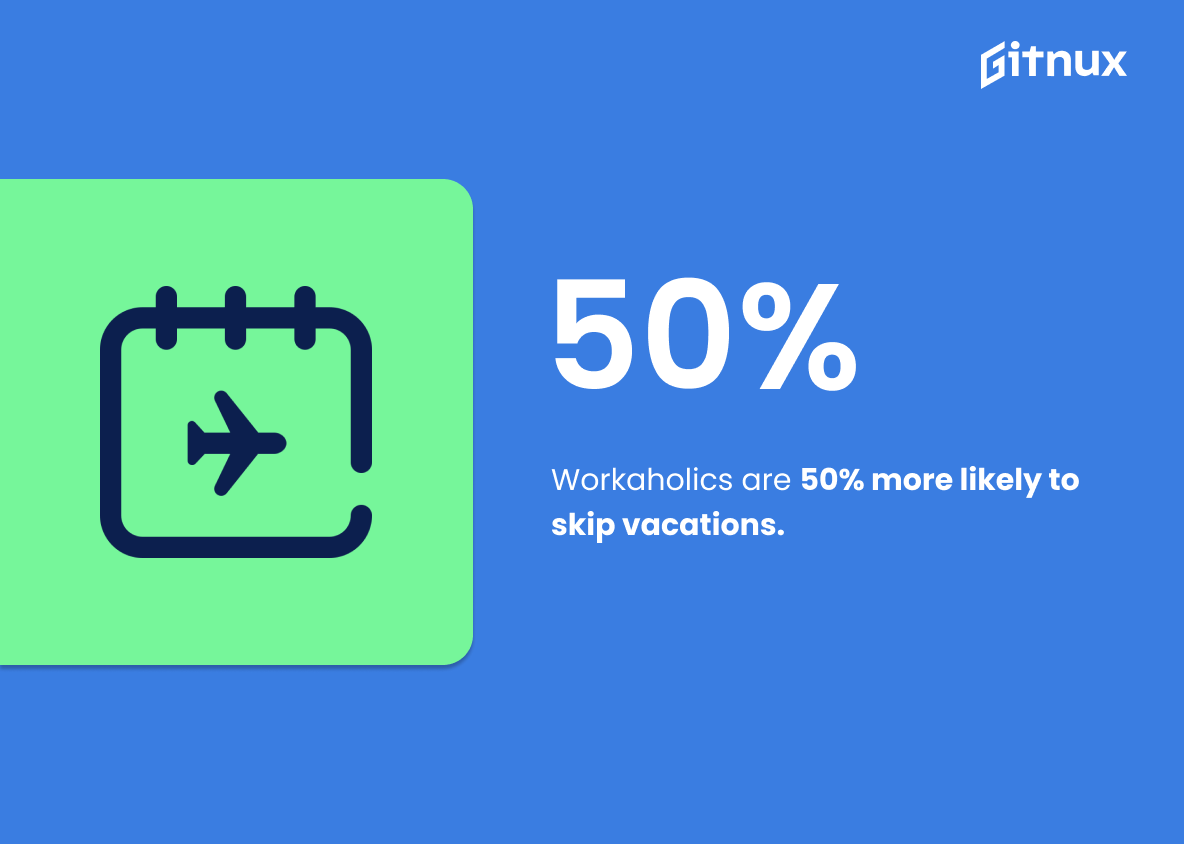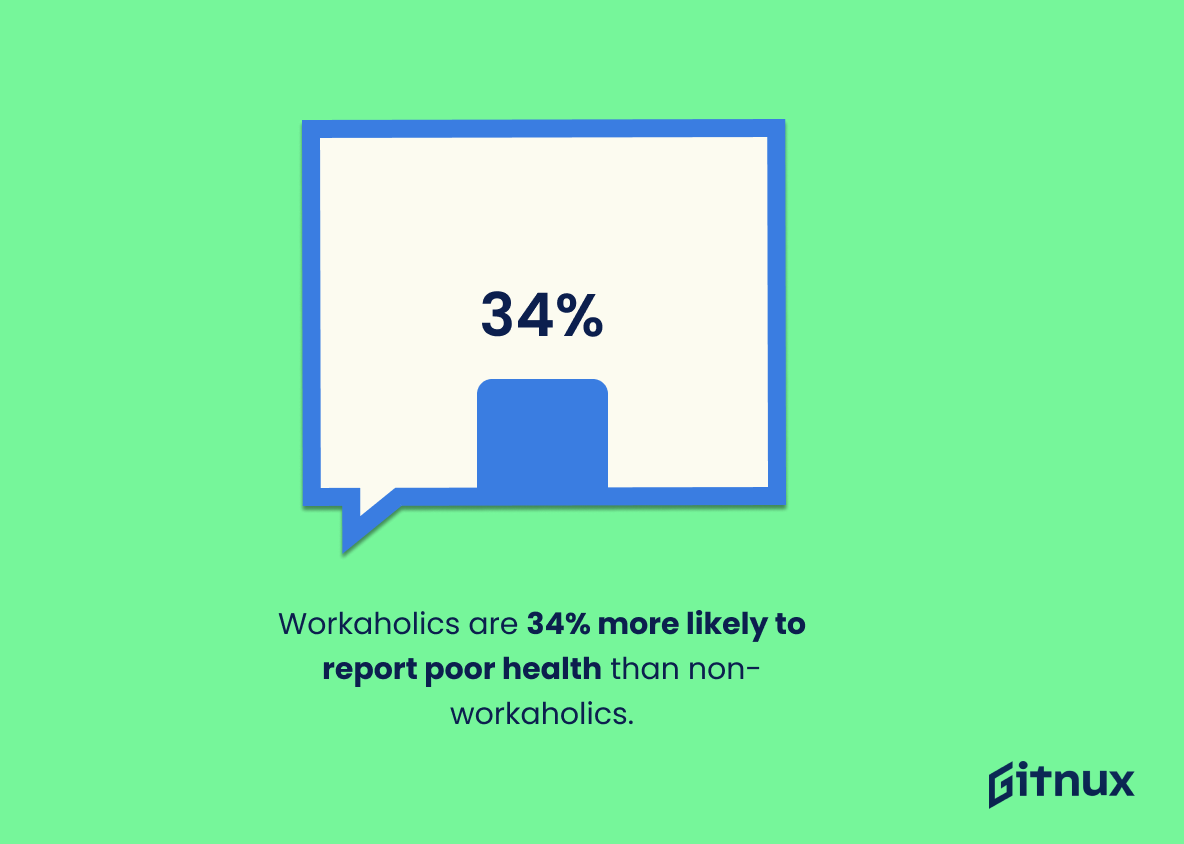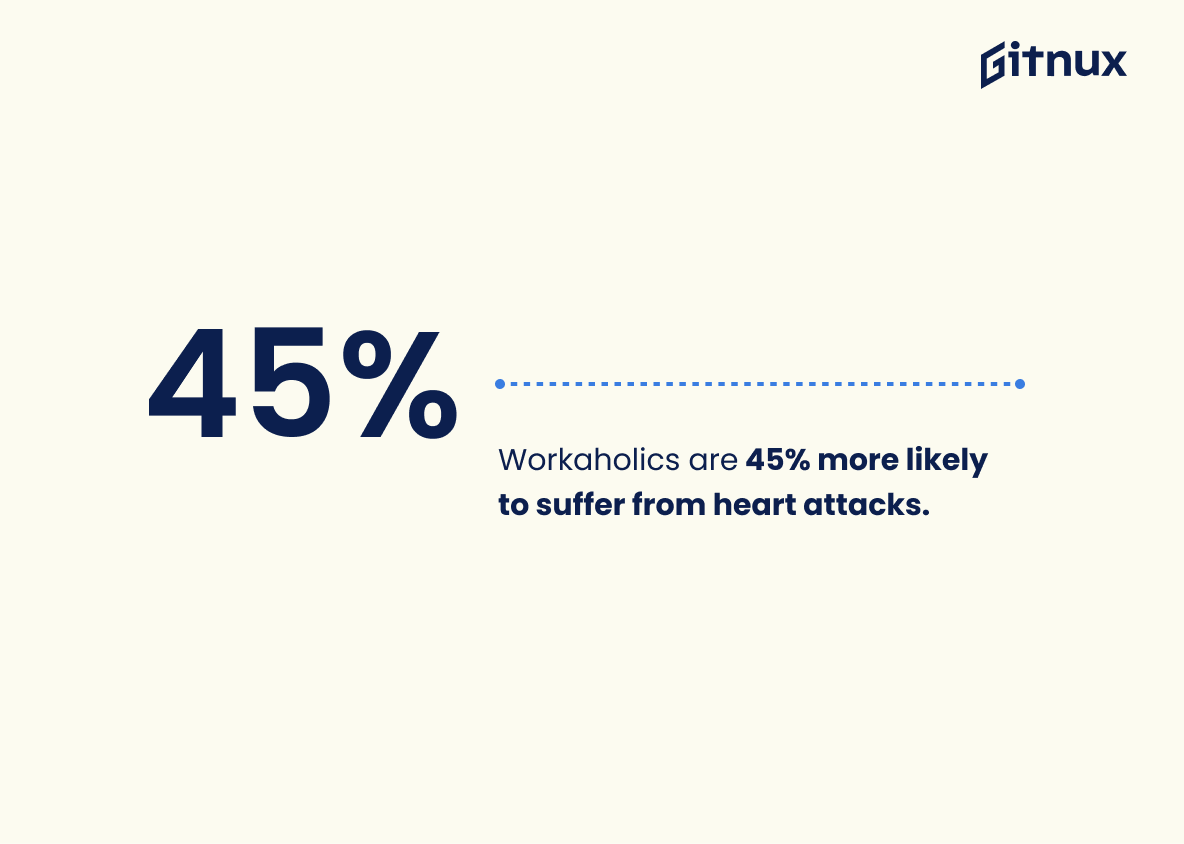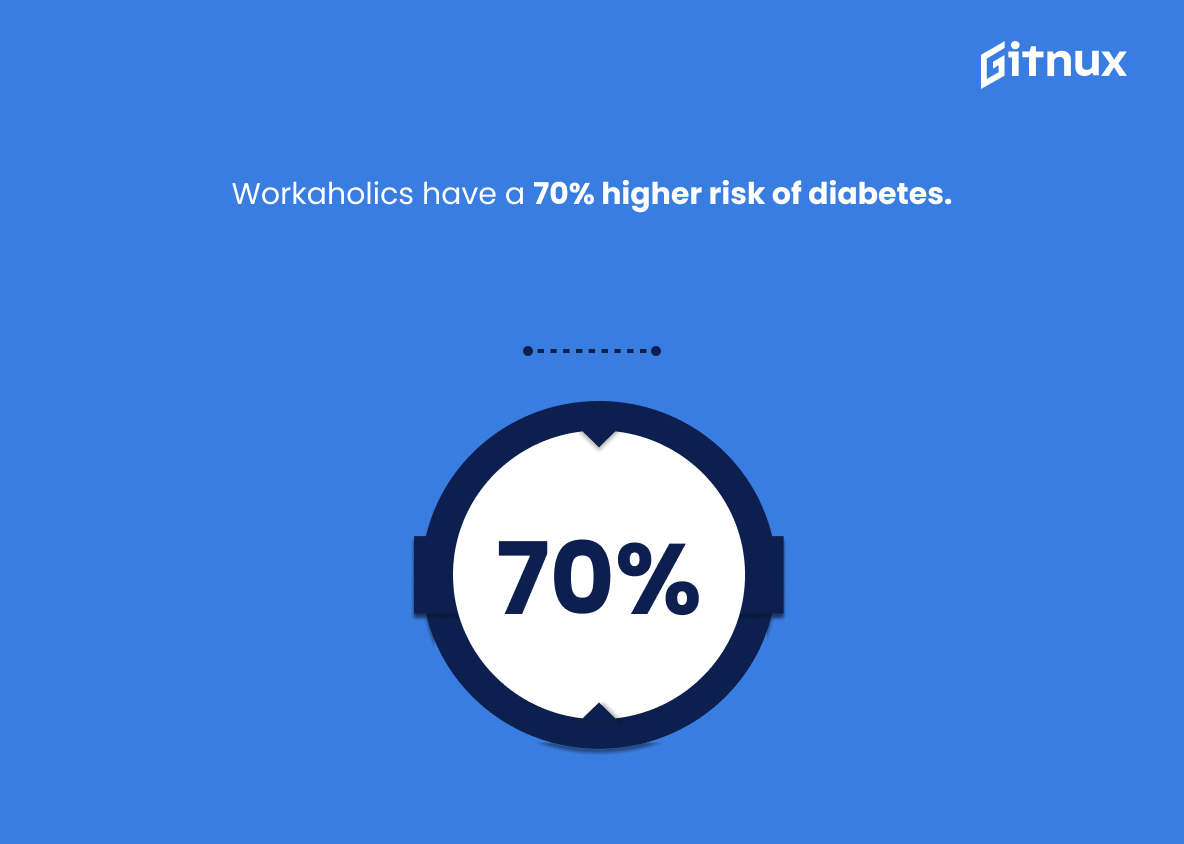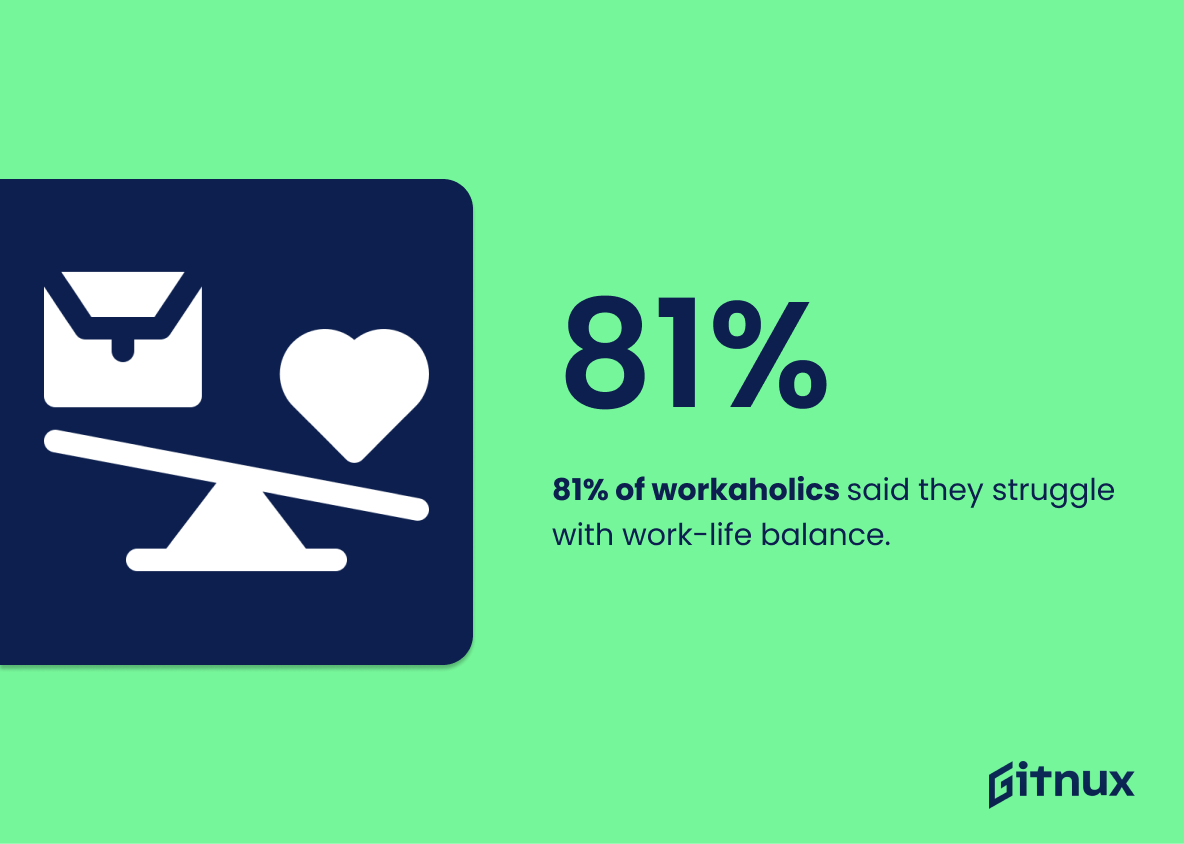Workaholism is a growing problem in the United States, with an estimated 10% of the population identifying as workaholics. While it may seem like working hard and long hours can be beneficial to one’s career, there are many potential risks associated with being a workaholic. This blog post will explore some of these statistics related to workaholics and their health, relationships, and overall wellbeing. We’ll look at how likely they are to develop cancer or suffer from depression; whether they’re more likely to get divorced or miss important events for their children; what kind of physical effects this lifestyle has on them; and much more. By understanding these facts about workaholism we can better understand its implications for our lives today.
Workaholics Statistics Overview
Workaholics have a 33% higher risk of stroke.
This statistic is a stark reminder of the potential health risks associated with being a workaholic. It serves as a warning to those who may be pushing themselves too hard, that they could be putting their health in danger. It is a reminder that it is important to take breaks and prioritize self-care in order to maintain a healthy lifestyle.
69% of workaholics exhibit signs of physical and mental health decline.
This statistic is a stark reminder of the potential consequences of workaholism. It highlights the importance of striking a balance between work and leisure, as an excessive focus on work can lead to serious physical and mental health issues. This statistic serves as a warning to those who may be on the brink of becoming workaholics, and encourages them to take steps to ensure their wellbeing.
Workaholics are 19% more likely to miss their children’s important events.
This statistic is a stark reminder of the potential consequences of being a workaholic. It highlights the importance of striking a balance between work and family life, as missing out on important events in a child’s life can have a lasting impact. It serves as a warning to those who may be tempted to prioritize work over family, and encourages them to take a step back and consider the potential repercussions.
Workaholics are three times more likely to suffer from depression.
This statistic is a stark reminder of the potential mental health risks associated with being a workaholic. It highlights the importance of striking a balance between work and leisure, and of taking the time to look after one’s mental health.
48% of workaholics have clinical insomnia.
This statistic is a stark reminder of the potential consequences of being a workaholic. It highlights the fact that workaholics are at a higher risk of developing clinical insomnia, a serious sleep disorder that can have a detrimental effect on physical and mental health. This statistic is a call to action for workaholics to take steps to ensure they are getting enough rest and relaxation to maintain their health and wellbeing.
Workaholics are 50% more likely to skip vacations.
This statistic is a telling indication of the potential consequences of being a workaholic. It suggests that those who are workaholics are more likely to sacrifice their own leisure time and relaxation, which can have a detrimental effect on their mental and physical health. This statistic is an important reminder that it is important to take time off and enjoy a vacation, even for the most dedicated of workaholics.
Workaholics are 34% more likely to report poor health than non-workaholics.
This statistic is a stark reminder of the potential health risks associated with being a workaholic. It highlights the importance of striking a balance between work and leisure, as neglecting one’s health can have serious consequences. It is a warning to those who are prone to overworking, and a reminder that taking care of one’s physical and mental wellbeing should be a priority.
Workaholics are 45% more likely to suffer from heart attacks.
This statistic is a stark reminder of the potential health risks associated with being a workaholic. It highlights the importance of striking a balance between work and leisure, as an over-reliance on work can have serious consequences for one’s physical and mental wellbeing.
32% of workaholics suffer from intense headaches due to stress.
This statistic is a stark reminder of the physical and mental toll that workaholism can take on an individual. It highlights the importance of taking breaks and managing stress levels in order to maintain a healthy lifestyle. It is a warning to those who may be pushing themselves too hard and a reminder that it is important to take care of oneself.
Workaholics have a 70% higher risk of diabetes.
This statistic is a stark reminder of the potential health risks associated with being a workaholic. It highlights the importance of striking a balance between work and leisure, as an over-reliance on work can have serious consequences for one’s health.
81% of workaholics said they struggle with work-life balance.
This statistic is a powerful indicator of the difficulty workaholics face in achieving a healthy balance between their professional and personal lives. It speaks to the reality that many workaholics are unable to find a way to prioritize their own wellbeing and that of their loved ones. This statistic is an important reminder that workaholics need to be mindful of their own needs and take steps to ensure that their work does not consume their lives.
Workaholics are twice as likely to suffer from anxiety.
This statistic is a stark reminder of the potential mental health risks associated with being a workaholic. It highlights the importance of striking a balance between work and leisure, and of taking the time to look after one’s mental health.
Conclusion
The statistics presented in this blog post demonstrate the serious physical and mental health risks associated with workaholism. From an increased risk of cancer to a higher likelihood of divorce, it is clear that workaholics are more likely to experience negative outcomes than non-workaholics. Additionally, they often struggle with maintaining a healthy balance between their professional and personal lives. It is important for individuals who identify as workaholics to be aware of these potential consequences so that they can take steps towards improving their overall wellbeing.
References
0. – https://www.link.springer.com
1. – https://www.apa.org
2. – https://www.actahort.org
3. – https://www.inc.com
4. – https://www.karger.com
5. – https://www.forbes.com
6. – https://www.bls.gov
ZipDo, cited June 2023: Workaholics Statistics
